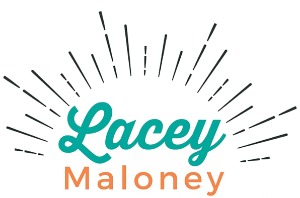Last week I posted this article about sea salt vs table salt and some of the myths concerning salt. To summarize, salt/sodium isn't bad, we actually need sodium for important functions but there are differences in the dietary sources of sea salt and table salt:
- During the processing of table salt the beneficial trace minerals are removed and lubricants and anti-caking agents are added - bummer!
- Sea salt, on the other hand, has not been processed, it still can contain over 84 different trace minerals and doesn't have potentially harmful additives - yay!
However, the one redeeming quality of table salt is added iodine
Iodine has been added to table salt (iodized table salt that is, not all table salt is iodized) since the 1920s, when it was realized that across the northern states, especially around the Great Lakes region, there were much higher rates of goiters (or benign growths) on the thyroid. This area was termed the Goiter Belt region.
The soils in the goiter belt region were depleted of iodine simply because of how the continents formed. Way, way, way back in the day, melting glaciers wiped out the iodine sources in the soil and swept them out to sea.
If you were living in the northern states before interstate highways and the invention of refrigerated trucks, you were getting food from local sources. So if you lived in Michigan you weren't eating vegetables grown in California and didn't get the benefits of more iodine rich soil.
Iodine is an essential element. It supports your skin, brain and muscles, but you may be more familiar with iodine's role in supporting the thyroid gland. The thyroid gland and the hormones it produces play a vital role in metabolism, energy, digestion, bone health, heart rate, body temperature and more. Thyroid hormones affect every cell in the body.
- Too little iodine can result in a sluggish metabolism as seen in hypothyroidism and Hashimoto's (an autoimmune disease where the immune system attacks the thyroid precursors).
- Too much iodine however, can overstimulate the thyroid, causing excess thyroid hormones to be produced. This can be seen in hyperthyroidism or Graves' disease (an autoimmune disease where the immune system stimulates the thyroid receptors).
- Those with Hashimoto's or an overactive thyroid should avoid excess iodine so as not to add more stimulus. Notice I said 'avoid excess'. That's because this doesn't mean zero iodine, but the tolerance for each person is going to be unique to each person and their symptoms.
Seaweed is a rich source of iodine since it is especially good at absorbing iodine from the ocean. Kelp even more so than other varieties of seaweed like nori or wakame. Other iodine sources include seafoods (cod, sardines, tuna and herring), vegetables, meat and a little in eggs.
The levels of iodine in plants and animal sources can vary greatly because it will depend on the soil they were grown in and the soil of the plants the animals fed on. The iodine content will depend on if the farmers are rotating their crops or not because that can also cause iodine and mineral depleted soil.
So now what?!
The answer isn't to stop eating locally grown food (for us northerners) and only eat food grown in the more iodine rich soils of the southern states, and it's not to go back to buying iodized but mineral-depleted table salt either.
Here are some foods higher in iodine:
- Use iodized sea salt
- Kelp flakes
- Seaweed snacks (I like these)
- Seafood: cod, salmon, tuna and sardines, etc
- Turkey
- Milk, cheese and yogurt (choose organic and/or raw)
- Eggs
- Strawberries and Bananas too!
Try to eat a variety of these foods. The government recommends only 150mcg as a minimum daily amount. But this level was established only to help prevent goiters, so it's not necessarily an optimal level. The National Institutes of Health recommends adults not exceed 1,100mcg per day. In contrast, the Japanese consume an estimated 1,000 to 3,000mcg every day. They of course have a much higher tolerance to iodine since seaweed is a staple in their diet and has been for centuries.
I prefer to eat a variety of the foods listed above but since it's difficult to rely on plant and animal sources I also include sea sources like kelp flakes which I add to eggs and salads. I also love seaweed snacks.
I still love my locally grown produce here in the Pacific Northwest, which contains other nutrients and vitamins that are not in prematurely harvested crops or lost during refrigeration and transportation.

